The 5 Key Benefits of a Living Wall
Rainwater Regulation
Supports local ecosystems
Stimulates biodiversity
CO2 absorption and air purification
Heat regulation and insulation
Types of living walls
There are several types of living walls available, including ground-based systems with climbing plants and modular solutions. Each type of living wall has its own benefits and can be customized to meet the specific needs of the building and location. The various systems from Mobilane are designed with circularity in mind, reliable, easy to install, fully recyclable, and particularly suitable for sustainable projects and climate-resilient construction. One thing these types of living walls have in common is that they provide a fully green facade immediately after installation.
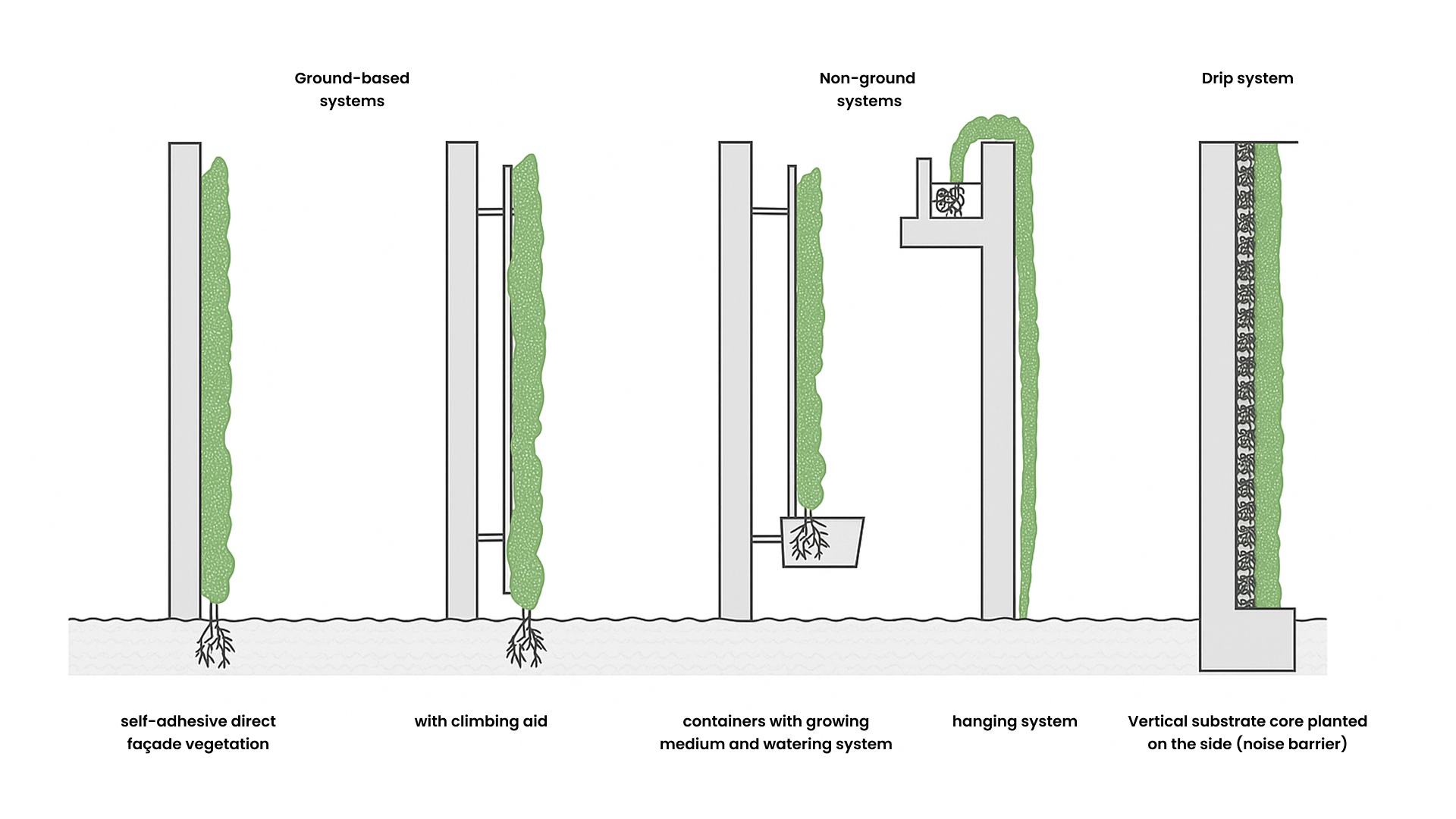
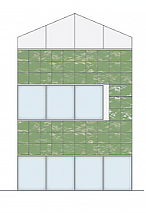
Living wall systems
A living wall system consists of modules or panels attached to the facade, in which plants grow with the help of an irrigation system.
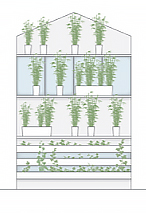
Living wall with planters
In this system, plants grow in planters attached to the facade. The plants do not root in the ground, but receive their nutrients and water directly from the planters via a built-in irrigation system.
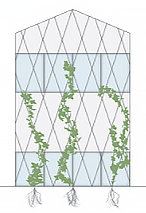
Ground-based living wall with climbing support
In this living wall, climbing plants root directly in the ground and are supported by climbing assistance (such as wires or trellises) attached to the facade.
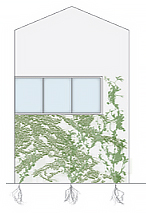
Ground-based self-adhesive living wall
This type of living wall uses climbing plants such as ivy, which grow directly from the ground and attach themselves to the facade without the need for a support structure.
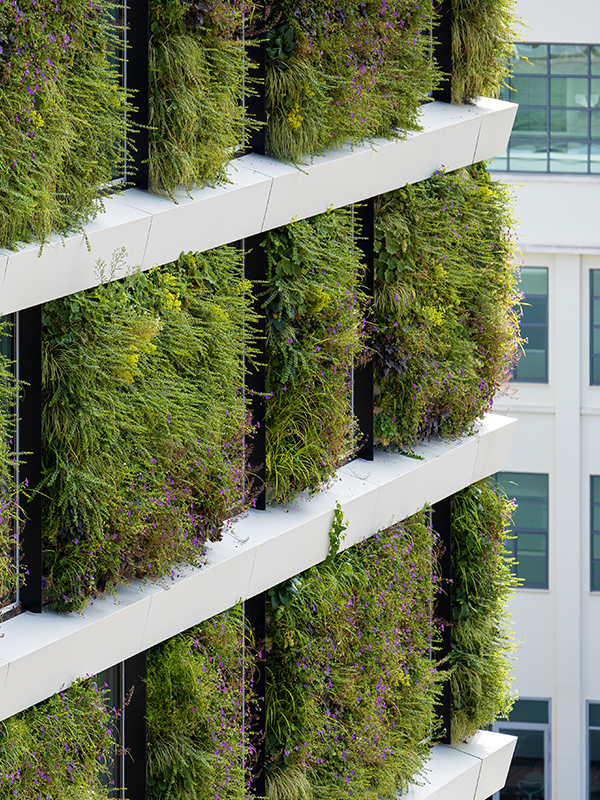
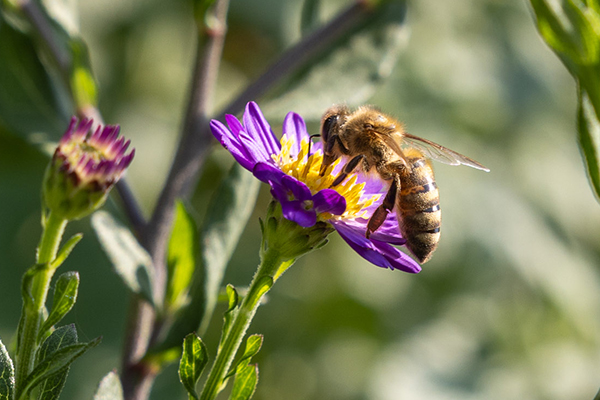
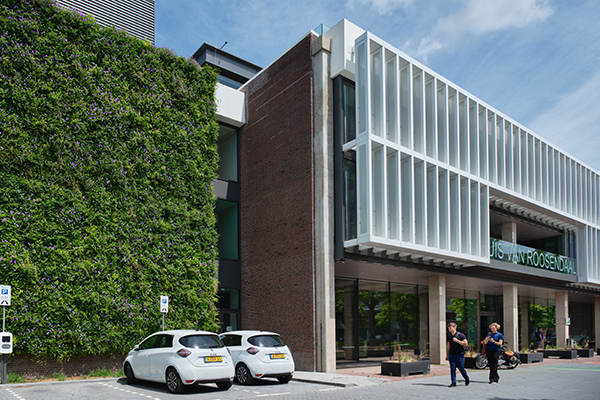
Which living wall is suitable for which project?
Choosing the right living wall depends on several factors, such as the climate, wind load, amount of sun/shade, and the orientation of the facade. The desired maintenance level, the load-bearing capacity of the facade, and functional requirements (such as thermal insulation or aesthetic goals) also play a role. Furthermore, it is important to consider the intended use and the desired biodiversity. Each project requires a unique design that takes into account these factors and the specific conditions of the location.
Technical requirements and types of facades for facade planting
iving walls can be installed on different types of facades, depending on the chosen system and the specific technical requirements of the building. Each facade has its own requirements, such as load-bearing capacity, insulation capacity, and ease of installation. It is important to ensure a suitable base to allow the planting to function well and achieve the desired aesthetics and sustainability. The main types of facades on which living walls can be applied are:
- Concrete facades
- Brick facades
- Wooden facades
- Steel or metal facades
- Facades with cladding, such as aluminum or composite panels
- Prefab facade systems
- Sandwich panels

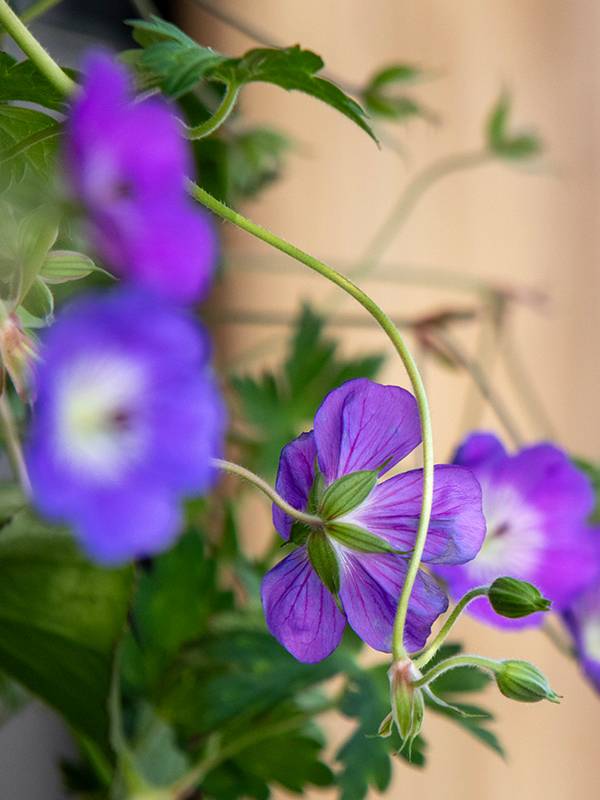
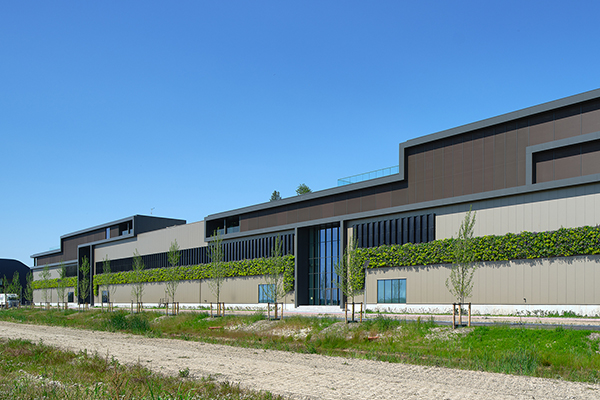
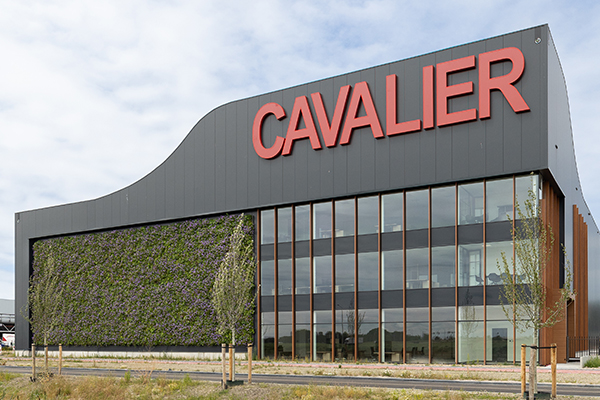
Living walls for distribution centers: sustainable and functional
Living walls offer many benefits for distribution centers (DCs), where they are not only aesthetically appealing but also contribute to the sustainability of the building. They help improve energy efficiency by better insulating the building, reducing energy consumption for heating and cooling. In addition, living walls can improve air quality and contribute to sound insulation, which is especially useful in busy industrial environments. The use of living walls on distribution centers also supports environmental goals, such as reducing the ecological footprint and enhancing the company’s image as a sustainable player.
A natural solution to heat stress
Living walls provide an effective solution to heat stress in urban environments through their natural ability to cool buildings. The vegetation absorbs sunlight, reduces the surface temperature of facades, and creates shade, while the plants cool the surrounding air through evaporation. This not only helps lower indoor temperatures but also reduces the urban heat island effect, contributing to a more pleasant and livable climate in cities.

Discuss the possibilities with a Mobilane specialist
Get in touch
By submitting this request, I agree to the privacy statement
Fire certificates for living walls
Living walls can meet various fire certificates, which are essential for building safety. These certificates ensure that the facade planting and the system used comply with strict fire safety standards. The highest achievable certification is often Euroclass A2 (under the European fire classification), which indicates that the materials are fire-resistant and produce minimal smoke and gas. This makes it possible to apply living walls in buildings with high fire safety requirements, such as offices, hotels, and high-rise buildings, without compromising on safety.
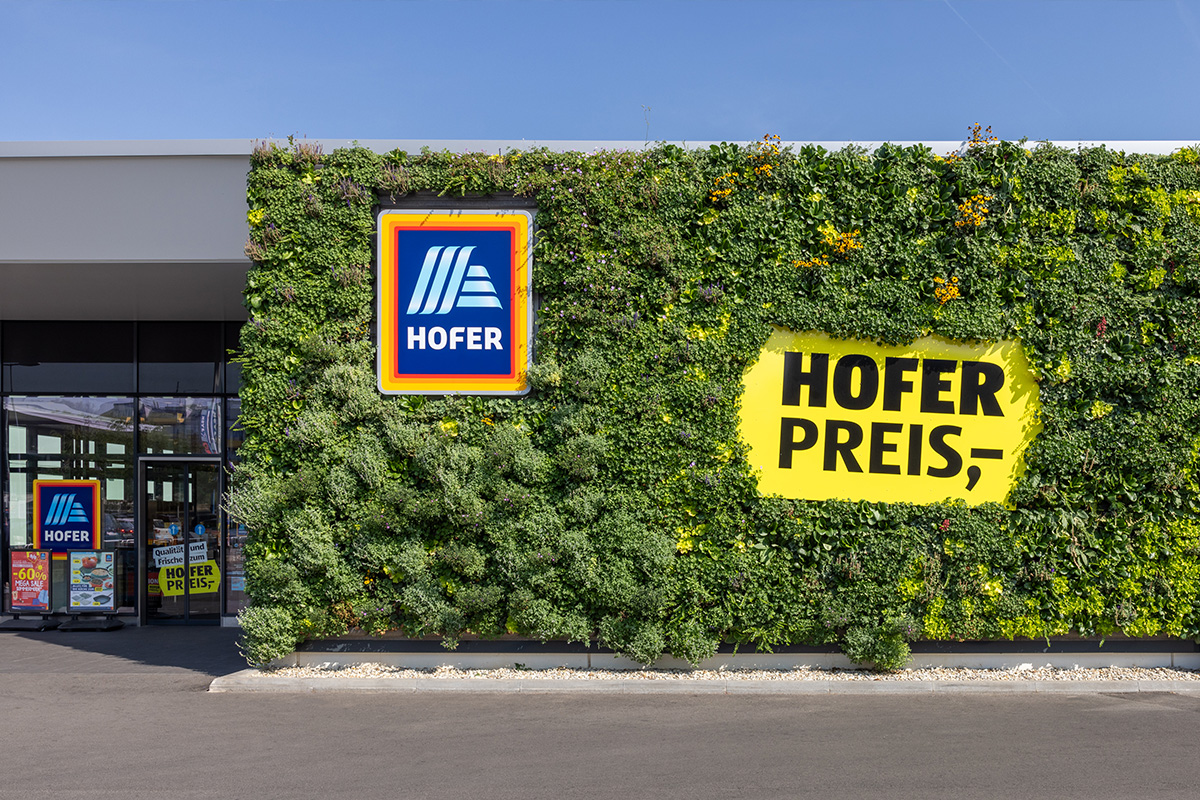
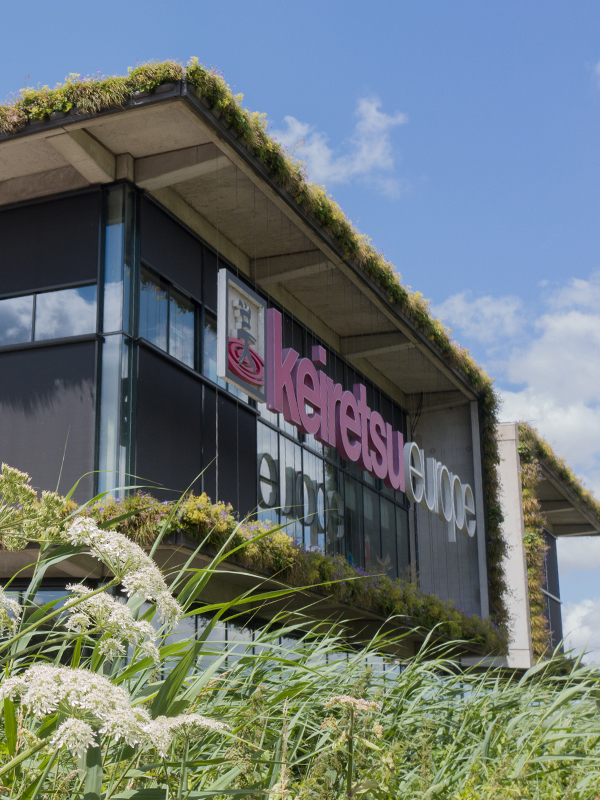
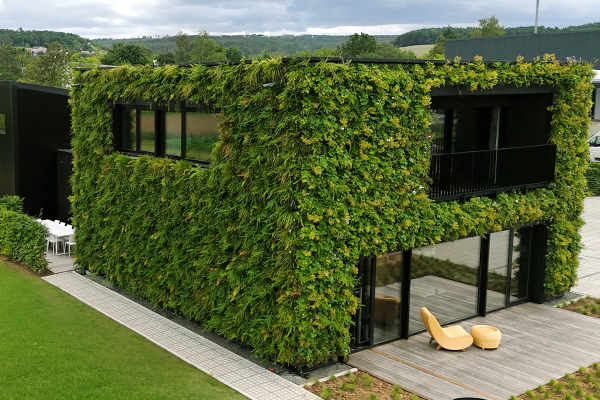
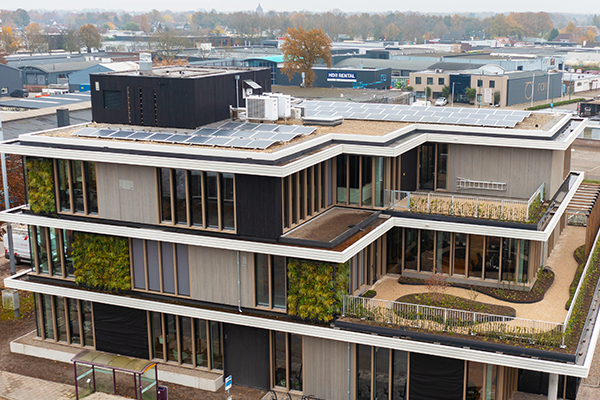
Sustainable rainwater irrigation system
Living walls can be equipped with a sustainable rainwater irrigation system, where rainwater is collected and stored for watering the plants. This option ensures that no tap water is used, making it both cost-effective and environmentally friendly. Collecting rainwater reduces the strain on the drainage network and provides a sustainable solution for maintaining the facade planting, significantly reducing water consumption. This system contributes to the ecological sustainability of the building and can help achieve sustainability goals and certifications.
An easy process
We start with a no-obligation conversation
Preparing budget, schedule, and quote
Planting and preparation
Installation and delivery of the living wall
Living walls and sustainability certifications
A living wall contributes to sustainability certifications such as BREEAM and LEED through various benefits. The plants improve the energy efficiency of a building by providing insulation, helping to reduce heating and cooling needs. They also enhance air quality by absorbing CO2 and fine particles, which benefits the health of the indoor environment. Additionally, a living wall aids in rainwater management by capturing and slowly releasing water, reducing flooding and pressure on drainage systems. Finally, a living wall promotes biodiversity in urban environments, which is positively assessed in sustainability certifications. In short, living walls play an important role in earning points for both BREEAM and LEED.
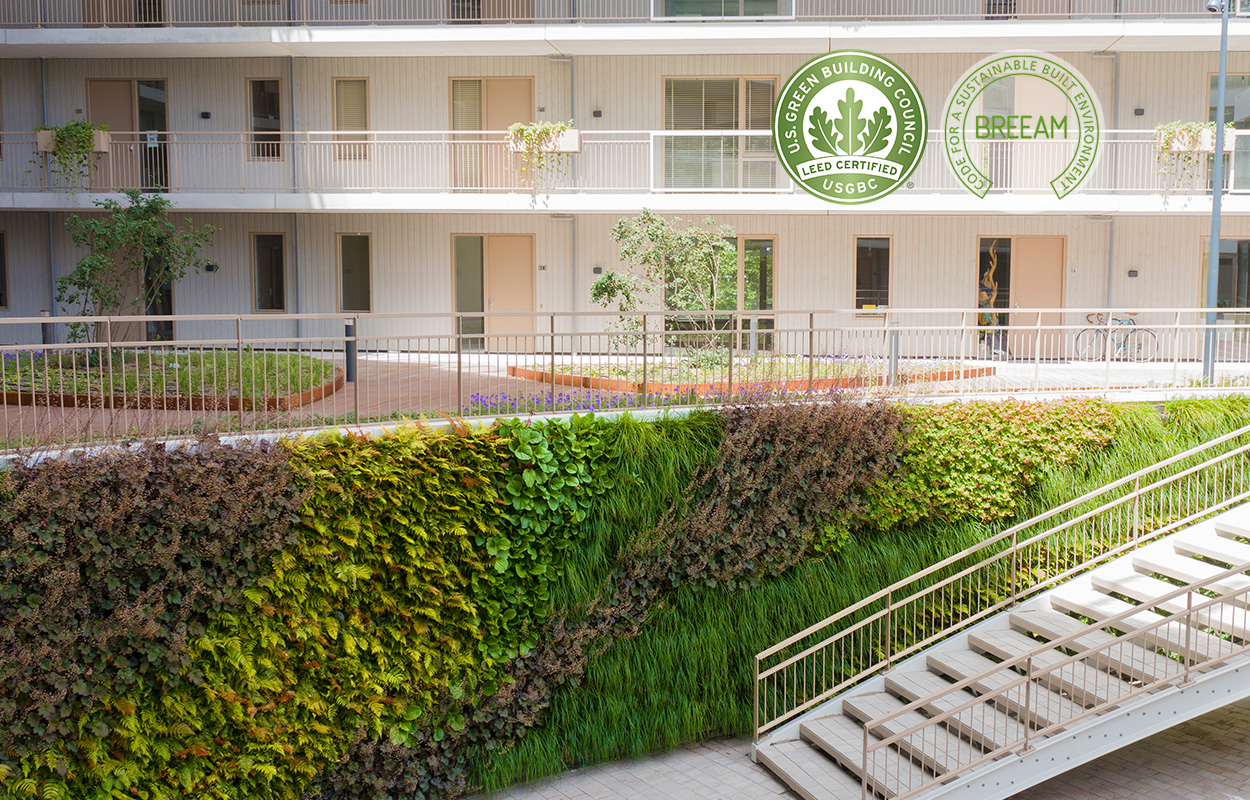

Improve the urban microclimate with living walls
Our cities are struggling with the growing challenges of the urban heat island effect and climate change. The integration of living wall systems into urban landscapes not only adds aesthetic value but also offers a range of environmental benefits, including cooling urban microclimates.

Living wall training
We provide training for green professionals and architects, focusing on the design, installation, and maintenance of living walls. During these sessions, we offer practical knowledge and insights, enabling participants to confidently integrate sustainable green solutions into their projects.
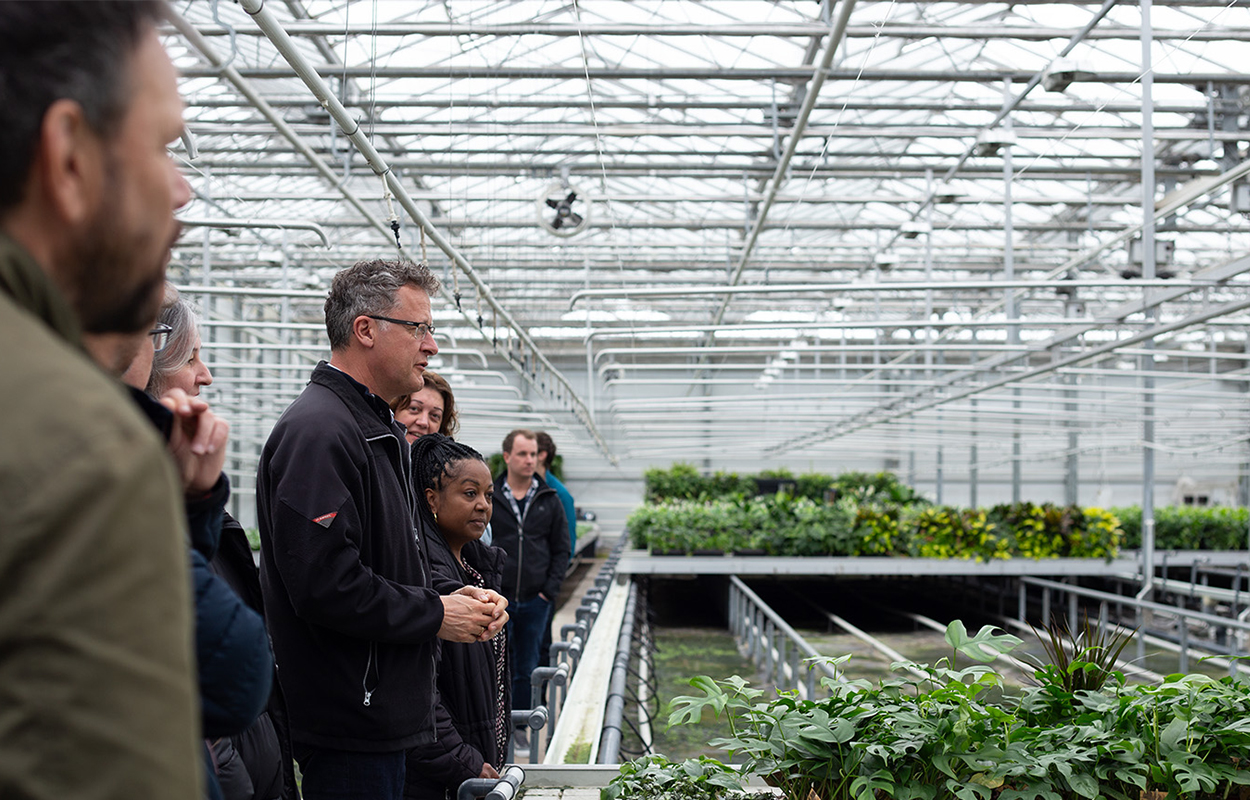
Frequently Asked Questions
All frequently asked questionsThe lifespan of a living wall depends on several factors, such as the type of system, the plants used, the quality of the installation, and the maintenance performed. They require professional installation and regular, professional maintenance.
Depending on the plants, the living wall needs to be pruned about twice a year. Maintenance also includes replacing unhealthy plants, controlling diseases and pests, and checking the irrigation system. The automated irrigation and drainage system ensures an even water supply and optimal water use, with rainwater serving as a supplement. During prolonged dry periods, a regular water source is necessary to support the system.
The choice of plants for a living wall depends on the type of system, location, and factors such as facade orientation. For ground-based systems and climbing support systems, Hedera helix ‘Woerner’, a strong and evergreen climbing plant, is a commonly used option. In more advanced systems, other plant species can also be used, such as ornamental plants and flowering varieties, allowing for unique designs in colors and patterns. Consult the Mobilane Plantguide for an overview of suitable plants or seek personalized advice from Mobilane Technical Support.
The cost of your living wall depends on several factors: the size and complexity of the project, the chosen system, whether or not an irrigation system is included, the plants, etc. On average, a living wall costs between €200 and €800 per m² (excluding VAT, including installation).
The main difference between ground-based and facade-based planting is the contact with the ground and the type of installation. A ground-based living wall uses climbing plants that grow directly from the ground and often rely on natural climbing supports. These plants usually receive water and nutrients from the soil and require regular maintenance. Facade-based planting is installed directly on the facade, without ground contact, and is equipped with an automatic irrigation and nutrient system. They are ideal for urban areas and offer more design freedom.
A living wall outdoors contributes to climate-resilient construction and enhances the greening of the living environment. The vegetated walls create a healthy and pleasant living climate for both humans and animals. Plants filter the air and convert carbon dioxide into oxygen. Facades and stone surfaces become very hot in the sun, and a living wall helps cool them down. Additionally, the plants in the living wall provide shelter for birds and insects, contributing to the promotion of biodiversity.
Discuss the possibilities with a Mobilane specialist
Get in touch
By submitting this request, I agree to the privacy statement













